Guest Post: Gender Inequality in Chess
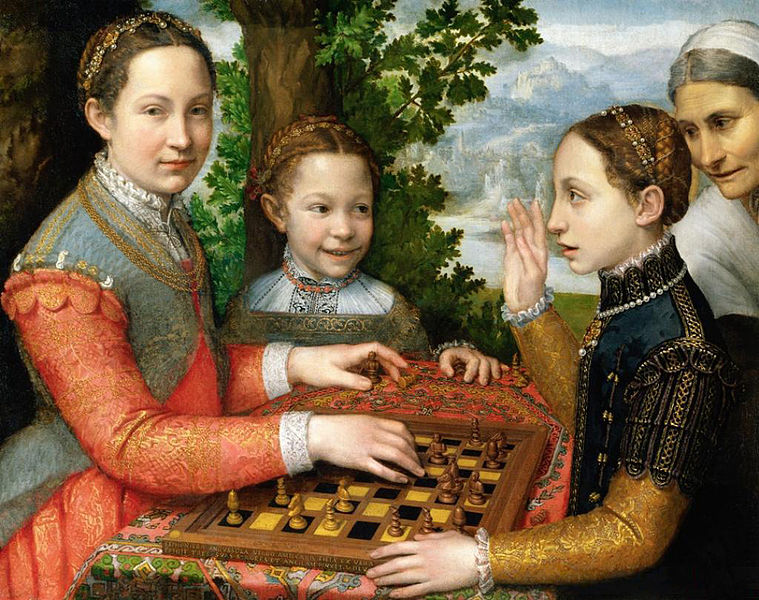
Editor’s Note: Today’s guest post is about the history of women in the world of chess. Honestly, even though I don’t know anything about chess (I don’t have the patience to play), I found this article to be very interesting, especially the part about the badass Polgar sisters.
———————————————————–
“Chess is everything: art, science, and sport.”
—Anatoly Karpov, Russian chess Grandmaster and former World Champion
Chances are, you’ve heard quite a bit of about the gender gap in science, technology, engineering and math (STEM), and gender issues in gaming. But have you ever heard of the gender barriers, gaps and apparent ceiling, in the game of chess?
Chess is one of the oldest known and widely played games in human history, with an origin story stretching back at least 1500 years. Those who know and appreciate the game might be tempted to conclude that a one so perfect at this must have been intelligently designed. However, the modern variant of chess actually evolved from earlier precursors (i.e., chaturanga, shatranj) through a series of successive rule changes. Though comprehensive data is hard to come by, some estimates suggest that upwards of 605 million people worldwide play chess regularly either at home, in parks, online, by mail or email (correspondence), or in clubs and tournaments; and at least 70% of adults have tried to play at least once.
Chess has also become a significant part of human culture in a way very few other games have. Its imagery has long been common in great art and literature (e.g., Da Vinci’s chess pieces; Shakespeare, The Tempest; Carroll, Alice’s Adventures in Wonderland and Through the Looking-Glass; Orwell, 1984; etc.) and today it can be seen in film (particularly in popular sci-fi series such as Star Wars, Star Trek / Star Trek, Blade Runner, 2001: A Space Odyssey, etc.) and television (e.g., The Big Bang Theory). It’s often used as a metaphor or analogy to help understand more complex things like science (as Richard Feynman does so beautifully here) or even life itself. It’s much more than just a game.
Clearly an intellectual pursuit as opposed to a physical one, chess has long been regarded as a gauge or indicator of intelligence. For example, in 1894, French psychologist Alfred Binet (inventor of the first widely used IQ test) was studying the intersection of chess and mathematics and he concluded that mastery in chess was highly correlated with both visual memory quality and mental calculation ability. Unfortunately for a novice player like me (in chess-speak: a patzer), Binet’s studies and others like it suggest that any correlation between chess playing and intelligence, per se, is tenuous and likely limited to master-level players.
More recent studies show that learning to play chess (much like learning to play a musical instrument or learning a new language) does have a multitude of cognitive, educational and social benefits, even for us non-masters. This, again, is not a new idea. As Benjamin Franklin wrote in “The Morals of Chess” (1750),
The Game of Chess is not merely an idle amusement; several very valuable qualities of the mind, useful in the course of human life, are to be acquired and strengthened by it, so as to become habits ready on all occasions… By playing at Chess then, we may learn foresight, by having to plan ahead; vigilance, by having to keep watch over the whole chess board; caution, by having to restrain ourselves from making hasty moves; and finally, we learn from chess the greatest maxim in life – that even when everything seems to be going badly for us we should not lose heart, but always hoping for a change for the better, steadfastly continue searching for the solutions to our problems.
Playing chess involves strategic and tactical, abstract and concrete thinking; it can lead to improvement in mental focus and acuity, ability to plan ahead, ability to quickly and carefully weigh options, etc. Some studies show a correlation with higher grades in both math and English and better scores on psychological tests measuring critical thinking and creativity. For the older crowd, chess may also help to stave off Alzheimer’s and dementia much like other mind-exercising activities such as doing crosswords, playing Sudoku, solving jig-saw puzzles, etc.
“They’re all weak, all women. They’re stupid compared to men. They shouldn’t play chess, you know. They’re like beginners. They lose every single game against a man. There isn’t a woman player in the world I can’t give knight-odds to and still beat.”
Before you get too offended, please consider the source. This is a quote from a 1962 Harper’s Magazine interview with then 18 year-old chess Grandmaster Bobby Fischer (pictured). Fischer was an American chess prodigy best known for his impressive and theatrical cold-war-era victory over Boris Spassky in 1972, making him the first ever World Chess Champion from the U.S. Such antiquated attitudes about gender may be less common and less extreme today than in Bobby Fischer’s heyday, but there is still much progress to be made.
“Fighting is a role for men; a woman’s role is to take care of the family. Men are better [at chess] because it is in the nature to be a man.”
This is a quote from a recent conversation I had with a 36-year-old (male) master-level chess player and popular online chess tutor/coach from Hungary. Not quite as bad as Fischer’s rant above, but certainly not what anyone would describe as enlightened either. Unfortunately, this type of attitude is still shared by too many inside and outside the chess community,
Just the facts, please…
So is there any truth behind the claim that men are better at chess than women, or is all of this a bunch of unfounded misogynistic nonsense? I’ll try to shed some new light on these old questions using objective data.
Note: All data is sourced from Fédération internationale des échecs (FIDE) (in English, World Chess Federation), and the U.S. Chess Federation (USCF), current as of February 2014. FIDE is the governing body of international chess competition, definer of the official rules of the game; and maintainer of individual player ratings and rankings. USCF is the governing body of chess in the U.S. Data on individual games was sourced from 365Chess, an online database with over 3.5 million games.
Fact: On average, male chess players tend to significantly outperform female chess players
This may seem surprising and/or offensive to some, but the data is clear and the disparities are undeniable. A direct comparison of male versus female performance in chess competition (as measured by Elo ratings) shows that, on average, female chess players tend to be significantly lower-rated than male chess players.
Elo (commonly pronounced as ee-low or E-L-O, but probably should be more like eh-low) is a comparative rating system developed by Hungarian-born American physics professor and chess player Arpad Elo. Elo ratings are arguably the most reliable and objective indicator of chess player performance and strength, and the means by which each player is ranked against all others. The rating is represented by a single number that rises and falls based on an algorithm that takes into account the results of each game as well as the relative strength (rating) of each player. In this way, it’s supposed to be self-correcting over time.
FIDE uses a slightly different algorithm than USCF, but both are based on the same basic system. Just for some context, here is how the FIDE ratings breakdown:
- 1200 is the current “rating floor” or starting point
- 1600 is generally considered an average-strength novice player
- 1893 is the current average for all FIDE rated players
- 2500 and above is required for Grandmaster
- 2735 is the highest rating ever achieved so far by a female chess player (Grandmaster Judit Polgar)
- 2785 is former world champ Bobby Fischer’s highest rating
- 2872 is the highest rating ever achieved in chess history so far (Grandmaster Magnus Carlsen)
In international play (using FIDE ratings) the average Elo for female players is 8% less than the average for male players. The disparity seems to be even larger in the U.S., where comparison of the 100 highest-ranked female chess players against the 100 highest-ranked male players (using USCF ratings) showed a staggering 20% gap. To help put this into perspective, the much maligned gender gap in math amounted to a roughly 6% difference between male and female math SAT scores in 2013. A direct comparison of chess games involving a man versus a woman (amongst the top players) shows that, on average, men tend to win 12% more often.
Fact: Female chess players are significantly under-represented in the upper echelons of competitive chess as compared to males
In addition to the ratings gap outlined above, there also seems to be somewhat of a ratings ceiling for female chess players. Out of the 100 highest-ranked FIDE chess players, currently one is a woman (1%) and out of the top 500, currently seven are women (1.4%). Out of the top 100 highest-ranked USCF chess players, currently three are women (3%). Out of 1443 Grandmasters, which is the highest title available aside from World Champion, currently 31 are women (2.2%). Overall, men tend to earn master-level chess titles at a rate of 6-to-1 over women.
So what’s really going on here?
Fact: Female chess players are significantly under-represented in competitive chess in general
Much of the disparity is easily explained by the imbalance in the overall ratio of male-to-female chess players in total. The first FIDE ratings list was published in 1971 with 589 total players (all men); a separate ratings list for women was established in 1979, with 24 initial players. Currently there are over 1 million FIDE members, roughly 11% of which are women. Amongst roughly 85,000 USCF members, roughly 3-5% are women.
A 2008 paper published in the Proceedings of the Royal Society: Biological Sciences concluded that:
96% of the observed difference [between male and female chess performance] would be expected given the much greater number of men who play chess. There is little left for biological or cultural explanations to account for. In science, where there are many more male than female participants, this statistical sampling explanation, rather than differences in intellectual ability, may also be the main reason why women are under-represented at the top end.
In other words, there is reason to believe that even if men and women have the same underlying distribution of chess-playing ability and cognitive skills, a larger number of top-ranked players will be men as long as significantly more men than women are competing. This is known as the participation-rate hypothesis.
An earlier paper by Chabris and Glickman, published in the journal Psychological Science, concludes that where the participation rate of women and men is equal, the disparity in ability drops below the levels of statistical significance. These explanations have been unconvincing to many, mainly because it seems intuitive that, all else being equal, if women make up roughly 10% of the total chess population, then it seems reasonable to expect they would represent about 10% of the overall Grandmasters (as opposed to 2.2%); it would seem reasonable to expect closer to 10 women the top 100 (as opposed to 1 for FIDE and 3 for USCF); or more like 50 amongst the top 500 (as opposed to 7). The problem is that not all else has been or is equal.
Fact: Historically, competitive chess has been almost entirely gender-segregated
Modern competitive chess as we know it today started to take shape in the early 19th Century, primarily in Europe and the U.S., as chess clubs started popping up, the first popular chess books and journals were being published, chess columns began appearing in newspapers, and organized chess matches/tournaments were being held. During this time and continuing through into the latter part of the 20th century, competitive chess was almost entirely gender-segregated such that women only played against other women, and men against other men, with very few notable exceptions.
It wasn’t until the late 1980s that mixed-gender chess really become possible at the highest levels, thanks in large part to one person–Susan Polgar (more on her later). Counting from the first “official” international chess tournament in 1851, this was at least 135 years coming. Even now, a large portion of competitive chess remains gender-segregated, apparently by choice.
Fact: Competitive chess is still very much gender segregated today
Amongst the top male chess players, on average, more than 95% of their games are played against another male opponent. Amongst the top female chess players, about 65% of their games are played against another female opponent. In other words, chess is still largely gender-segregated. The difference now is that most tournaments and scholastic clubs have multiple different divisions or groupings based on gender, age or rating—as well as “open” sections that are available to anyone regardless of age or gender. Players self-select into these groups to a large extent, whereas in the past the open option did not exist for women. Two-time Women’s U.S. Chess Champion and WGM Jennifer Shahade said,
“All-girls tournaments allow participants to make friends, share hotel-room expenses, and compete in open tournaments. So rather than take women away from mixed competition, I think they actually encourage them to compete in the end.”
Fact: Historically, female chess players have been measured against lower standards and held to different criteria than male chess players
When FIDE first adopted the Elo rating system in the 1970s, the “floor” or starting point was different for men than for women. A new (unrated) male player would start with a floor of 2200 whereas a new (unrated) female player would start with a floor of 2000. Ostensibly, the lower rating floor for women was not designed to deflate their ratings as compared to men, but rather to encourage more women to play chess. Absent any unfounded assumptions about male-female superiority, it seems baffling that anyone would consider this to be in any way encouraging or in the best interest of female chess players. However, the prevailing attitude at the time was that women could and would not compete against men.
The lower rating floor plus the historical fact of gender-segregated chess meant that female chess players were statistically doomed to have lower ratings than the male chess players. The difference between the Elo ratings of the winner and loser determines the number of Elo points gained or lost after each game. Female players not only started with a lower rating, but they were initially prevented from playing against the highest rated opponents who happened to be men, thereby limiting their potential Elo growth rate and their ability to earn master-level titles such as Grandmaster.
FIDE first began awarding master-level titles in 1950, and initially there were 27 Grandmasters (GMs) and 94 International Masters (IMs) amongst the top-ranked male chess players and 17 International Women Masters (now called Women International Master or WIM) amongst the top-ranked women. The Elo ratings system wasn’t adopted until 1970, at which point the requirements for earning titles were formalized. Commensurate with the lower ratings floor and lower ratings average, WIM requires an Elo of 2200 whereas the gender-neutral IM title requires 2400. In 1977, FIDE also began awarding the title of Women Grandmaster (WGM), which also has less stringent requirements that the corresponding gender-neutral title of GM. Women-only versions of the lesser known titles such as FIDE Maser (FM) and Candidate Master (CM) are also available.
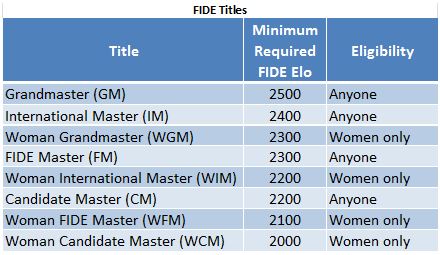 Do the women-only titles, with their less stringent requirements, send a not-so-subtle message to women that they won’t be able to compete on a level playing field? Does being held to lower standards lead to degradation in performance over time? At least some people believe so, including 4-time U.S. Women’s Chess Champion and IM Irina Krush, who said,
Do the women-only titles, with their less stringent requirements, send a not-so-subtle message to women that they won’t be able to compete on a level playing field? Does being held to lower standards lead to degradation in performance over time? At least some people believe so, including 4-time U.S. Women’s Chess Champion and IM Irina Krush, who said,
“I don’t see their benefit. Women’s titles are really a marker of lower expectations.”
To be clear, the GM, IM, FM, and CM titles have theoretically always been gender-neutral, meaning there has never been a rule in place that prevented women from earning those titles. However, given the initial conditions (lower ratings floor, fewer female chess players, and gender-segregated competition) it would have been all but impossible for anyone to have done it under any plausible scenario. Earning a GM title requires achieving an Elo rating of at least 2500 and playing well in tournaments against other players who are already themselves GMs (known as earning “norms”).
Woman Grandmaster Natalia Pogonina put it this way,
“You just can’t obtain the norms [GM qualifications] no matter how well you perform, unless there is a certain percentage of Grandmasters among your opponents. And where would you get those in a female tournament?”
The answer to that question came in 1978, when the first female chess player in history, Nona Gaprindashvili, was awarded the gender-neutral title of Grandmaster. Chess historians and fans will note, however, that FIDE made the award by special fiat based to her stellar performance in the 1977 Lone Pine International Tournament where she defeated four GMs (all men, of course) along the way. She hadn’t technically met the requirements to earn the title, but FIDE apparently was attempting to level the playing field, if only by degrees. In the 1980s, the gender-based ratings disparity began to gain the attention of many in the chess community, not least of which was Professor Arpad Elo himself. In a 1986 letter to FIDE, Prof. Elo recommended the ratings be adjusted to correct the discrepancy, explaining,
“The differences in performance ratings against men and women may be combined in various ways. When weighted by the number of games against men the average difference is 108 rating points and when weighted by the number of games against women it is 113 points. The interpretation is quite clear: the women’s ratings are, in general, low by approximately one half of a class interval (100 points).”
That same year (1986), FIDE’s assembly of member nations accepted Prof. Elo’s recommendation, and every active female player (except one: Susan Polgar) received 100 bonus Elo points; the ratings floors would be leveled as well. At the time, there were around 600 women and 5000 men with FIDE ratings.
Exceptions to the rule: the Polgar sisters (Susan and Judit)
Susan Polgar was a child chess prodigy who became the top-ranked female chess player in 1984, at the age of just 15 years and four months; she remained ranked amongst the top-three female players for the next 23 years of her chess-playing career. More impressively, she did so by deliberately avoiding women-only tournaments, choosing instead to compete against the best competition regardless of gender. In 1986, she was dethroned from the number-one spot when FIDE increased the ratings of every other female player except her, a decision many felt was politically motivated and unfair.
Discouraged but not beaten, Susan Polgar went on to smash through the chess gender barrier in two big ways. In 1986 (same year as the Elo give-away), she became the first woman in history to qualify for the “men’s” World Chess Championship, proving without question that women are capable of competing at the very highest levels of the game. Then, in 1991 she became the first woman in chess history to earn Grandmaster through the conventional means (i.e., earning the required Elo rating of 2500 or above and playing well against other GMs). Aside from actually winning the World Chess Championship, there really are no more gender-barriers left un-breached in competitive chess because of Susan Polgar.
In terms of chess playing abilities and impact on the game, there is really only one other female chess player in history (so far) who deserves to be mentioned alongside Susan Polgar—and that happens to be her youngest sister Judit Polgar. Also a former child chess prodigy, Judit is now far and away the strongest female chess player in history (so far), and perhaps the only one to represent a serious challenge to every one of the gender-based disparities outlined above. Whereas no other female chess player in history has managed to break into the top 100 amongst all players, Judit managed to make it to number 10 in the world amongst all players (male and female). She holds the record for the highest Elo rating ever achieved (so far) by a female chess player at 3725 2735 [Ed’s note: corrected a typo; thanks to the commenters with sharp eyes!] , which is higher than 99.98% of all other players in history (men and women). If Susan Polgar broke through the gender barrier, Judit climbed over it and set-up camp on the other side, something no other women had been able to do before or since. (By the way, Sofia Polgar, middle sister, was also a child chess prodigy and is now an International Master—that’s three female chess masters in one family!)
Fact: Female chess players tend to play significantly fewer games than males
Amongst the top chess players, the male players tend to play twice as many rated-games as the females. This is explainable by supposing that the men are playing in more tournaments and that each tournament likely has more opponents, thus leading to more games than would be seen in a female-only tournament. More games means to more opportunities to increase (or decrease) one’s rating.
Fact: Female chess players tend to play significantly lower-rated opponents than males
The top male chess players tend to play opponents who are rated, on average, 6% less than themselves; whereas the top women tend to play opponents rated 15% less. In other words, the men are playing against (relatively) higher rated opponents, which is not surprising given they have a much larger pool of high-rated opponents to choose from.
Fact: Female chess players tend to be significantly younger than male chess players
Amongst all listed FIDE members, the female chess players are, on average, nearly 14 years younger than the male chess players; the gap is smaller at the very top, with the 10 top-ranked women averaging 4 years younger than the 10 top-ranked men. Older players may be more likely to have funds and time available for tournaments and they tend to have more experience than younger players. The age difference may also be off-putting or intimidating, leading some to avoid mixed-gender tournaments that are likely to be filled with older men.
Fact: Female chess players have a more difficult time finding sponsors
One of the primary obstacles for women in the upper levels of competitive chess seems to be lack of sponsorship, which can make it more difficult for women to compete in tournaments requiring travel, lodging and other expenses. The 2008 Women’s World Chess Champion and GM Alexandra Kosteniuk explained it thusly,
“The most serious challenge for top-rated female chess players in general is to find commercial sponsors or institutional support, like from sports foundations or government sports committees. Having both Open and Women’s divisions enables female players to earn money that helps them continue their professional pursuits.”
Fact: Cultural and social influences probably account for some of the gender disparities
Cultural norms and social influences likely play a non-trivial role in this. Historically, women tended to be regarded as inferior to men both physically and intellectually, and were thought to be best suited for raising a family and keeping a happy house. The largest effect this had was the establishment of a gender-segregated chess as the norm.
That women have always been under-represented in competitive chess means that there have always been fewer strong female chess players who could serve as an inspiration and role model for others. It also means that women tend to have fewer close friends and acquaintances that might introduce them to chess and have always been likely to face a predominantly older male crowd. All told, this type of environment understandably leads to fewer girls and women playing chess.
In summary…
Fact: Women and girls are in fact capable of competing at the highest levels of completive chess
Take it from someone who would know, GM Susan Polgar,
“Women are as capable as men. When I started playing, there was no woman grandmaster and just a handful of international masters. It was a big challenge as lot of people did not believe it was possible. It was tough but motivated me to prove them wrong. If a woman wants to succeed, she must put in the same amount of work and make the same amount of sacrifices [as men]. There is no other way around it. There are no excuses and there should not be.“
The gender disparities in chess are caused by a confluence of factors—some historical, some mathematical/statistical, some cultural/social, and some apparently due to different chess playing tendencies and demographics. The Polgar sisters, among other elite women, stand as proof that any gender barrier is temporary and must ultimately fall. The only real question is how long it will take.
Different treatment leads to different outcomes. Holding women to lower standards than men was the primary root cause of the initial gender gap in chess, and gender-segregated competition seems to be the primary root cause that allows that gap to persist over time. We should work to end the antiquated and deleterious practice of gender-segregated chess competition, which may be beneficial in that it provides women with more opportunities in the short-term, because ultimately it creates a self-limiting system that tends to hold them back as compared against male opponents. Rather than lowering the bar so that more women earn a master-level title, we should work to eliminate those barriers that are making it objectively more difficult for them in the first place.
While I would never recommend that women-only chess titles be eliminated outright, nor that gender-segregated chess be “outlawed”—I would recommend that steps be taken to make these less and less necessary over time. As more girls and women begin playing at all levels, and as mixed-gender clubs and tournaments become the standard, the gender disparities should begin to shrink and eventually disappear.
We can all do our part to help accelerate the pace of progress by helping to encourage young people, especially girls and women, to try chess. Introduce them to the game, help to spark an interest, and push them to play with and against the best competition they can find. We can all help to create and foster a more encouraging environment and culture where everyone is treated more fairly and where everyone has the opportunity to rise to the top of the top. Those who can should also consider helping to sponsor more girls and women in chess (e.g. by donating to organizations such as the Susan Polgar Foundation or the Judit Polgar Foundation). For anyone looking to play chess online, Internet Chess Club is like heaven for chess-nerds and enthusiasts, and perfect for anyone who might be more comfortable playing anonymously.
The next World Chess Champion is out there, just waiting for someone to nudge them in the right direction…
Brief History of Chess
The earliest known precursor to the modern game of chess, known as chaturanga (Sanskrit, meaning “four divisions”) is believed to have originated in Eastern India during the early part of the 6th Century. This was the earliest known game to have two essential features common to all later chess variations–namely, different pieces having different powers and victory being dependent upon the fate of a single piece (now, the king).
By the start of the 7th Century, the game had made its way from India into neighboring Persia, where it underwent several name changes (“chatrang” then “shatranj”) and the rules began to evolve. For example, it was around this time that players began calling out “shah!” (Persian, meaning “king!”) when attacking the opponent’s king, and “shah mat!” (meaning “the king is helpless”) when the king was under attack and had no means of escape. After the Islamic conquest of Persia (633-644), the Muslim world took up the game, which quickly started to spread through trade.
By the year 1000, shatranj had spread to China, Russia and throughout Europe, where the name of the game became “chess” and the Persian exclamation shah became “check.” By the 15th Century, the rules had evolved to the point where one might start to refer to it as “modern chess” that would be recognizable as such. Among the most significant changes made at that time was the replacement of the earlier “vizier” piece with the newer the “queen,” which was promoted to the most powerful piece in the game. By the early 19th Century, the rules had reached the point where they are still in force today. Now, in addition to normal chess and its precursors, there are also dozens of variants.
Interesting and Early Milestones in Women’s Chess
- 802 A.D., one of the earliest known references to a woman chess player, from a letter (written in Sanskrit) mentioning the purchase of a “slave girl” noted for her skill in chess
- 1804, Madame de Remusat (1780-1824) plays chess with Napoleon Bonaparte at the Malmaison Castle, possibly while nude (according to an anonymous painting of the affair)
- 1827, a woman named Mrs. Fischer defeats Maelzel’s Mechanical Turk, a fake-chess playing automaton secretly operated by a human chess master, during the “machine’s” stop in Philadelphia
- 1847, the first or one of the first ever women’s chess club opens in Holland
- 1848, one of the first known chess columns appears in The Lady’s Newspaper in London
- 1857, Amalie Paulsen (1831-1869) reportedly defeats Judge Alexander Meek, who was one of America’s top chess players at the time, in an unofficial game during the 1857 first American Chess Congress
- 1872, Mary Rudge (1842-1919) manages to make a noticeable crack in the chess gender barrier when she becomes the first woman ever accepted in the Bristol Chess Club
- 1879, the first Women’s International Chess Congress (first or one of the first women’s international chess tournament) is held and won by none other than Mary Rudge
- 1889, the earliest known instance of women giving a public simultaneous chess exhibition (simul) wherein Mary Rudge plays six different games against six different opponents at the same time, and wins every game
- 1894, Women’s Chess Association of America in formed with 75 initial members (including several of the best female chess players from outside the U.S. as honorary members)
- 1927, the first Women’s World Chess Championship is held (by the newly formed FIDE), and won by British-Czech chess master Vera Menchik—making her the first ever women’s world chess champion
- 1950, the first official female chess masters are named, including 17 International Women Masters (now called Women International Master or WIM)
- 1977, the new title Woman Grandmaster (WGM) is established by FIDE
- 1978, Nona Gaprindashvili becomes the first woman ever awarded the gender-neutral title Grandmaster, based on performance in 1977 Lone Pine International Tournament where she defeated four GMs along the way
- 1984, Susan Polgar (then 15 years, 4 months) becomes the top-ranked female chess player and does so by playing almost exclusively in mixed-gender tournaments
- 1986, FIDE grants to all active female players, except Susan Polgar, 100 bonus Elo rating points, which had the effect of knocking Susan out of her number one spot amongst all female players
- 1986, Susan Polgar makes history by becoming the first female chess player ever to qualify for the “men’s” World Chess Championship intervals
- 1991, Susan Polgar becomes the first female chess player in history to earn the gender-neutral title Grandmaster through conventional means (i.e. earning a minimum Elo of 2500 and required GM norms)
- 1991, Judit Polgar becomes the (then) youngest person in history ever to achieve the gender-neutral title Grandmaster, at just 15 years and 4 months
- 2005, Judit Polgar achieves the highest Elo rating ever (so far) by any female in chess history (2735) and rises to number 10 amongst all players (male and female)
———————————————————–
About the Author: Bryan M. is a guest author and relatively new Skepchick member. He is a chess enthusiast and life-long gamer, with passion for science and skepticism. He was born, raised and is still living in the suburbs surrounding Washington, D.C., and makes a living as a quality management consultant (think “the Bobs” from Office Space).

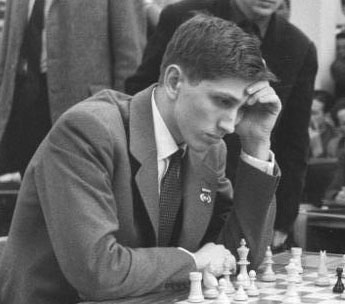
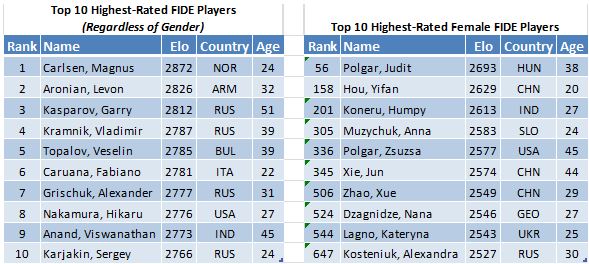


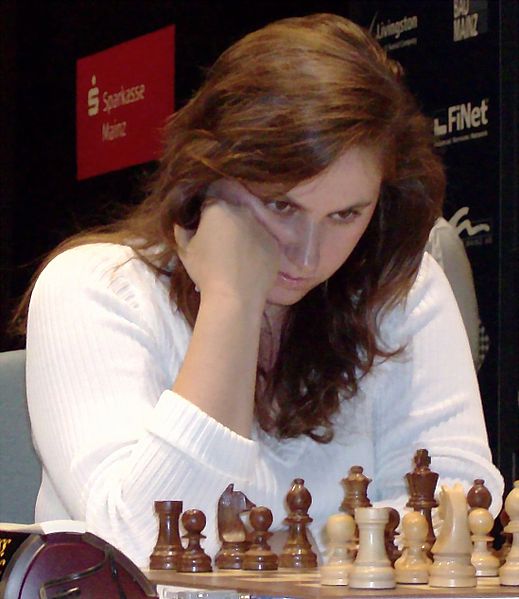




Is Judit Polgar’s peak rating meant to be 2725? Because 3725 would be pretty impressive. Interesting that she used to play fischerandom against Fischer in the 90s, so he probably changed his mind then.
It seems obvious that you can only really gain rating points if you’re playing people rated higher than you (and if you’re playing people rated significantly lower than you, you’ll lose quite a lot of the points from bad luck). So it’s not surprising that women are rated lower, because there’s nowhere really for the rating points to come from. I didn’t know that the rating floor for women used to be 100 points lower, and adding them back years later isn’t really the same.
Wikipedia says it’s 2735
Since I didn’t see her in the list of milestones may I add Irina Krush at the 1999 Kasparov versus the World match to the list?
http://en.m.wikipedia.org/wiki/Irina_Krush
I remember following Kasparov versus the World and the innovative move she came up with.
Great addition, I remember that as well. There were so many impressive milestones, it was very difficult narrowing the list down to a reasonable size.
Incidentally, is it just me, or is Irina Krush just about the best name ever for a [chess] champion? I. Krush, both a name and a statement of fact.
athorist,
Thanks, great catch – that should be 2735. Maybe we’ll see a peak rating of 3725 after the technological singularity…
My game is contract bridge, rather than chess. There are women’s tournaments, but my impression is that they are rare (not being eligible myself, I don’t pay that much attention.) At a rough guess, I’d say club players are around 40% women. So I think the circumstances of women in bridge is rather better than in chess.
I’ve just gone looking for evidence. The American Contract Bridge League hall of fame contains 20 women, 88 men. The Australian Bridge Federation 100 top point earners of 2014 are approximately 25 women, 70 men, 5 unknown. (I’m just going off given names for that break-down.) I looked at the World Bridge Federation rankings but found them too confusing, e.g. people appear on a ‘womens’ list but not on an ‘open’ list.
(It seems that from midway through the article above, all chess points got 1000 added to them – e.g. early on, the ‘floor’ ranking is stated to be 1200, later it is either 2000 (women) or 2200 (men).)
Thanks, I am not familiar with bridge at all but it is interesting to note the gender differences are not as marked as in chess.
Also, to clarify, the current FIDE rating floor is 1200 for everyone, regardless of gender. When FIDE ratings were first implemented (in the 1970s), the ratings floor for men was 2200 and the floor for women was 2000. That means if a new (unrated) player entered a tournament and lost every single game, they would end up with an initial rating of 2200 or 2000 (depending on gender); if they won any of the games, then their initial rating would be higher. I had trouble finding exactly when the ratings floors were leveled and lowered but I suspect it was in the mid-1980s around the time when FIDE granted 100 bonus rating points to all active women except Susan Polgar.
It just goes to show that when it comes to competitive intellectualism and strategy such as chess and card games, gender disparity in performance correlates perfectly with institutional sexism ACTIVELY KEEPING women from performing in the same company and at the same level as men. Hold men and women to the same standard and give them both equal opportunities to succeed and these disparities will disappear over time. Congratulations to the Polgar sisters for crashing through patriarchy and demolishing one more glass ceiling.
On another note, taken directly from Susan Polgar’s blog:
“When Fischer met me and stayed at my family’s home in Hungary back around 1993, he no longer had the same view about women in chess.”
Minds can be changed!
Wow, that really is a great quote – thanks! It must have been an amazing scene at the Polgar house, perhaps the first time ever that Fischer was confronted by women who could not only compete with him, but who could actually out-compete him at his own game. And they were kind enough to show him hospitality when nobody else in the world would do so. How could anyone not walk away with a different mindset after that?
Also, I agree with everything you said – level the playing field and the supposed gender-based disparities start to disappear left and right.